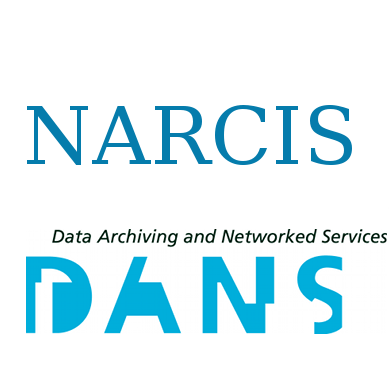Focal point
Location
National Academic Research and Collaborations Information System (NARCIS) is the main Dutch national portal for those looking for information about researchers and their work. NARCIS aggregates data from around 30 institutional repositories. Besides researchers, NARCIS is also used by students, journalists and people working in educational and government institutions as well as the business sector.
NARCIS provides access to scientific information, including (open access) publications from the repositories of all the Dutch universities, KNAW, NWO and a number of research institutes, datasets from some data archives as well as descriptions of research projects, researchers and research institutes.
This means that NARCIS cannot be used as an entry point to access complete overviews of publications of researchers (yet). However, there are more institutions that make all their scientific publications accessible via NARCIS. By doing so, it will become possible to create much more complete publication lists of researchers.
In 2004, the development of NARCIS started as a cooperation project of KNAW Research Information, NWO, VSNU and METIS, as part of the development of services within the DARE programme of SURFfoundation. This project resulted in the NARCIS portal, in which the DAREnet service was incorporated in January 2007. NARCIS has been part of DANS since 2011.
DANS - Data Archiving and Networked Services - is the Netherlands Institute for permanent access to digital research resources. DANS encourages researchers to make their digital research data and related outputs Findable, Accessible, Interoperable and Reusable.
Members:
Resources
Displaying 521 - 525 of 1863Environmental impact assessment based on planning support system
How to assess environmental impact is one of the keys in land use planning. This article described in detail the concepts of activities, impact zones, functions, and sensitivities, as well as the development of STEPP (strategic tool for integrating environmental aspects in planning procedures) based on Avenue, the secondary developing language of ArcView GIS. The system makes it convenient for planning practitioners exchanging information, and can spatially, visually and quantitatively describe environmental impact and its change.
Van scenario naar gebied en weer terug
Scenario’s helpen de toekomst te verkennen. Ze laten zien welke keuzes voorliggen. Door scenario’s voor concrete gebieden uit te werken blijkt echter dat die keuzes niet altijd zo scherp zijn als de globaal geformuleerde scenario’s suggereren. Een gebiedsgerichte uitwerking geeft inzicht in hoe een theoretisch geformuleerd scenario uitpakt in de praktijk. Dat helpt scenario’s te verbeteren. Een gebiedsgerichte uitwerking van scenario’s maakt duidelijk om welke keuzes het werkelijk gaat.
Evaluation of pro - poor land administration from an end-user perspective: A case-study from peri-urban Lusaka (Zambia)
Peri-urban areas in Africa are usually dynamic with respect to land tenure. Statutory, informal and customary tenure systems often co-exist and interfere with each other. This disclosure of legal pluralism often leads to lower levels of tenure security, especially for people with low incomes. Pro-poor land administration tools have been designed to cater for the poor. The question arises whether these tools have the desired impact. This question is answered by confronting the existing tenure regimes with the pro-poor land administration tools.
Agriculture and food security in selected countries in Sub-Sahara Africa: diversity in trends and opportunities
The World Food Summit in 1996 set the goal of reducing by half the numbers of malnourished people in the world by 2015. It is unlikely that this will be reached, and particularly not in Sub-Saharan Africa (SSA). Food imports in SSA have increased in the past forty years, since domestic production could not keep up with population growth. Several studies have reported about this stagnating food production in SSA. However, this region encompasses a large number of countries, with a great variety of agro-ecological zones and large differences in land, labour and other resources.



